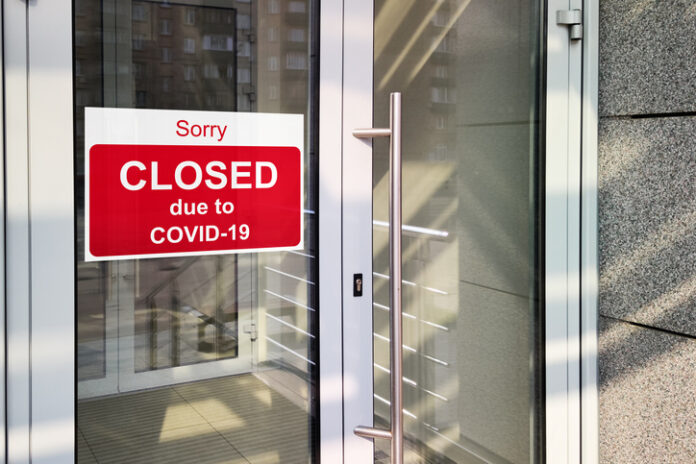By William M. Briggs
Lockdowns kill. Suppose a bug is 100 percent transmissible. Everybody in contact with somebody infected therefore gets it and passes it on with certainty to the next person they meet.
A lockdown will spread this bug faster than allowing people to remain at liberty. Lockdowns are not quarantines in the old-fashioned sense of that term, where infected people were isolated—kept separate in every way from the non-infected. If you think lockdown and hear quarantine, your ears are busted. Quarantines can make sense; lockdowns never do.
Lockdowns are merely forced gatherings. People in lockdown are allowed to venture forth from their dwellings to do “essential” activities, like spending money at oligarch-run stores. These stores are collection points, where people are concentrated. Some are allowed to go to jobs, such as supporting oligarch-run stores.
The decision over which stores are allowed to remain open and which are forced to close is arbitrary. This does not include stand-alone restaurants, for instance, but you can eat in oligarch-run company cafeterias, like at Costco. Google employees can eat in their own cafeterias or break rooms, too. Restaurants can still come to you, via delivery. These are concentration points. You can go to a grocery store, but some aisles, those containing forbidden items, might be closed off, thus forcing people into fewer spaces.
Lockdowns are not quarantines. Lockdowns concentrate people into fewer areas. Lockdowns cause only pain.
Liberty Protects
Lockdowns allow people outside to mingle and collect germs, then they force them back inside to spread those germs with a vengeance. It’s clear that our 100 percent transmissible bug will spread much faster when people are forced to spend more time indoors with each other. Once one person gets it, he will spread it to those at his home immediately. If people were at liberty, and therefore more separated, the bug would still spread to everybody, but more slowly (the speed here is relative).
Now suppose the bug only has a one in a 1,000 chance of spreading per contact. That is low. Lockdowns will still spread it more quickly than liberty, and for the same reason. Lockdowns force people together. The venues where people are allowed to venture are restricted, and therefore concentrate contact, and they force people inside their homes where it’s obvious contact time increases. Lockdowns concentrate contact spaces and times.
Transmission rate, then, has little to do with the efficacy of lockdowns. There is no efficacy of lockdowns preventing transmission, only in controlling where the transmissions will take place.
The opposite of the lockdown is quarantine-liberty. The ill are quarantined, kept entirely separate from the healthy until they are dead or no longer communicable. Because of cheating, transmission is still possible, but it’s far less likely. Liberty of the healthy allows people to live their normal lives, which slows transmission. And does not concentrate power into the hands of the government or oligarchy.
It was obvious before 2020 that lockdowns – with then only weather forcing people to gather inside for long periods – not only did not stop the transmission of bugs, but helped spread them. A look at the all-cause death numbers peaking every single winter without exception (this year, too) proved that. It was in no way controversial. It was so well-known that forced contact spread bugs that mentioning it was like saying the sun rose in the east.
The “Expert” Circular Jerk
Then came 2020 and the “expert” idea of lockdowns [was the idea that they] would do the opposite of what everybody had always known they would do. Suddenly, instead of spreading bugs, as they always did before, they would stop or at least slow the spread. Experts said so. Why?
Models. Specifically, the two-step Model Circular Jerk.
It works like this. A modeler says, “X is true.” He builds a model that assumes X is true. He runs the model, whose output consists of “X is true” and its variants. He then announces, “X is true, confirmed by my sophisticated computer model.”
In our case, we have Neil Ferguson, a British epidemiologist, claiming some new variant of the coronavirus has higher transmissibility—which is just an assumption. He says to himself, “Lockdowns slow and stop the spread of bugs”. He builds a model that assumes lockdowns slow and stop the spread of bugs. He runs the model, which consists of “This lockdown will slow and stop the spread of this new bug variant.” And he announced he has confirmed the efficacy of lockdowns via his sophisticated model.
And he is believed. This happens everywhere, not just with coronavirus. All that being said, the only thing that makes sense in modern lockdowns is limiting mass gatherings where mass intimacy is expected, such as at riots. Even still, the higher the transmissibility, the fewer effects these bans will have.
William M. Briggs, Ph.D., (matt@wmbriggs.com) is a statistician, and author of The Price of Panic, How the Tyranny of Experts Turned a Pandemic into a Catastrophe. This article was published on December 29 on wmbriggs.com. Reprinted with permission.





















